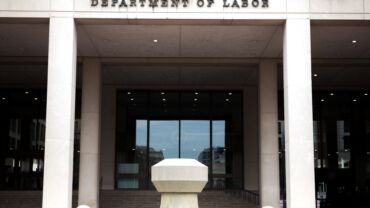New Fiduciary Advice Exemption: PTE 2020-02: Improving Investment Advice for Workers & Retirees: Frequently Asked Questions (Apr. 2021); Choosing the Right Person to Give You Investment Advice: Information for Investors in Retirement Plans and Individual Retirement Accounts (Apr. 2021)
The DOL has issued separate guidance documents for investment advice providers and retirement plan investors to help them understand and respond to new Prohibited Transaction Exemption (PTE) 2020-02. Adopted last December, PTE 2020-02 allows financial institutions and investment professionals who provide fiduciary investment advice to receive various forms of otherwise prohibited compensation if they comply with certain requirements (see our Checkpoint article). The 21 FAQs for investment advice providers provide background on the PTE and address three main subjects: compliance dates; the definition of fiduciary investment advice; and compliance with the PTE.
-
Compliance. The FAQs affirm that PTE 2020-02 became effective as scheduled on February 16, 2021, and that the DOL’s temporary enforcement policy set forth in Field Assistance Bulletin 2018-02 (see our Checkpoint article) remains in effect until December 20, 2021. The DOL considered delaying the PTE, but concluded that the core components of the PTE provide fundamental investment protections that should not be delayed. Amendments to PTE 2020-02 and the fiduciary advice regulation are anticipated, however, and some other class exemptions may be amended or revoked.
-
Fiduciary Definition. The FAQs summarize the reinstated five-part test for fiduciary investment advice (see our Checkpoint article), as well as the DOL’s reinterpretation of that test to cover IRA rollover advice. (That interpretation is set out in the preamble to the PTE.) The FAQs note that while written statements disclaiming fiduciary status may be considered, they are not determinative. In applying the five-part test, the DOL will consider the reasonable understandings of the parties based on all of the circumstances.
-
PTE Compliance. Most of the FAQs address specific requirements of the PTE, including the impartial conduct requirement, written acknowledgment of fiduciary status, disclosure of conflicts of interest, documentation of rollover advice, and annual retrospective reviews. The FAQs offer greater detail regarding what financial institutions must do to meet the PTE’s standard for mitigation of conflicts of interest, special considerations for the use of compensation payout grids, and compliance by insurance companies and agents. Much of the guidance appears to follow—and in some cases reproduce verbatim—observations made in the preamble to the PTE.
The document for individual investors includes a list of questions that investors should ask an investment advice provider prior to relying on the provider’s investment advice. These questions address, among other things, the investment advice provider’s fiduciary status, requests for a written statement of fiduciary status, whether a provider complies with PTE 2020-02 or another exemption, fees and expenses, conflicts of interest, advice limitations (e.g., to proprietary products), asset monitoring, and the reasons for a rollover recommendation. The investor guidance also includes FAQs about the PTE itself, lists of additional resources, and explanations of key concepts and terms.
EBIA Comment: Reading the DOL’s FAQs for investment advice providers produces a strong sense of déjà vu. Many of the FAQs consist primarily of material from the preamble to PTE 2020-02, repackaged to make it more accessible. Some of the material goes further back. The FAQ on payout grids, for example, is reminiscent of FAQ guidance explaining the DOL’s—now revoked—Best Interest Contract Exemption (see our Checkpoint article). Recycled or not, these FAQs will be required reading for advice providers. The document for individual investors also has roots in 2017 guidance (see our Checkpoint article), which similarly encouraged investors to inquire about potential conflicts of interest. To help participants get the benefit of this latest guidance, plan sponsors and administrators might consider using plan communications to draw attention to the investor guidance, explain its significance, and offer links making it easier to find. For more information, see EBIA’s 401(k) Plans manual at Sections XXIV.D (“Investment Advice Fiduciaries”) and XXIV.L (“Prohibited Transactions”), and EBIA’s Consumer-Driven Health Care manual at Section XVI.E (“Overview of HSA Prohibited Transaction Rules”).
Contributing Editors: EBIA Staff.









